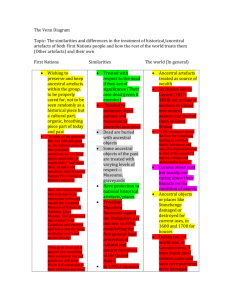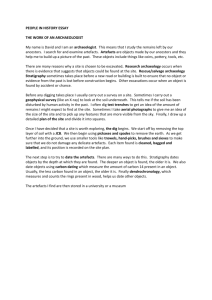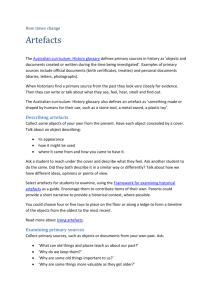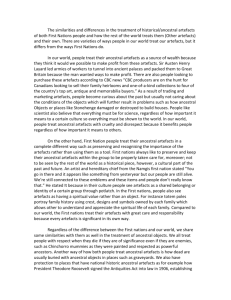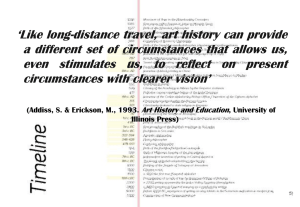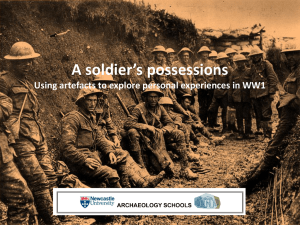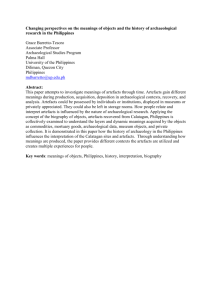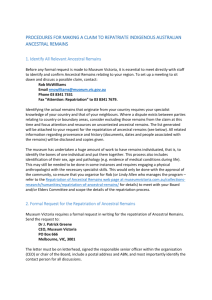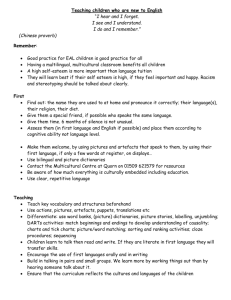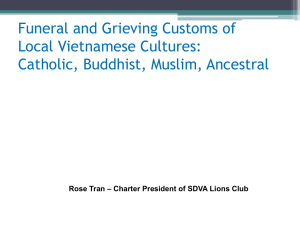socials-venn-diagram-project-2
advertisement
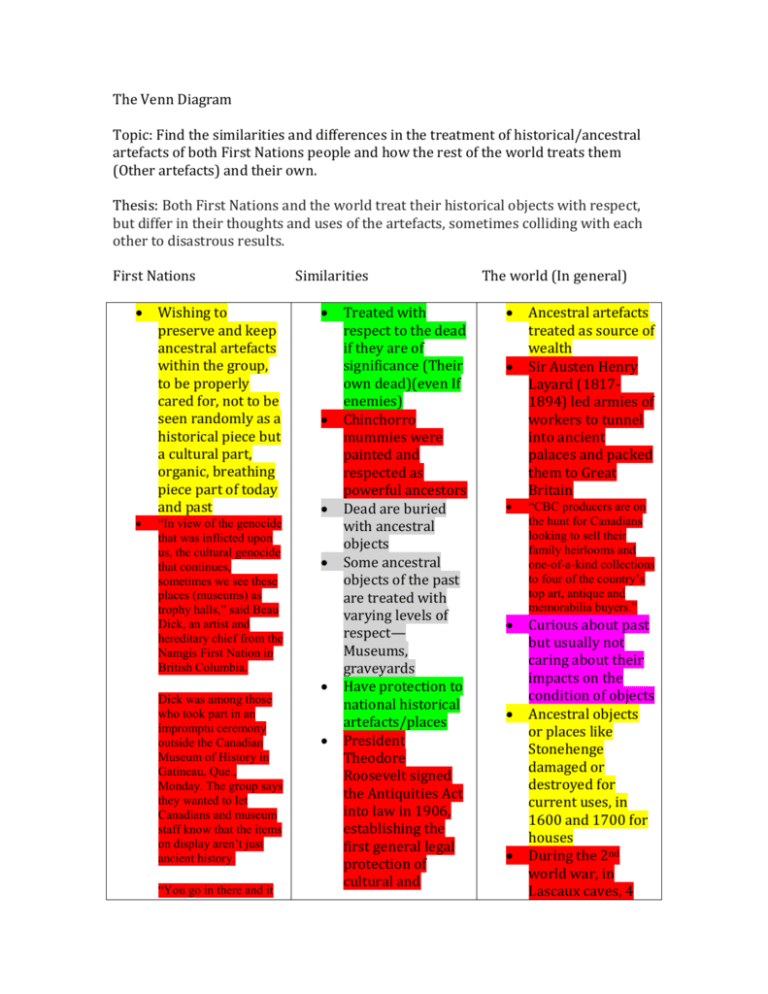
The Venn Diagram Topic: Find the similarities and differences in the treatment of historical/ancestral artefacts of both First Nations people and how the rest of the world treats them (Other artefacts) and their own. Thesis: Both First Nations and the world treat their historical objects with respect, but differ in their thoughts and uses of the artefacts, sometimes colliding with each other to disastrous results. First Nations Wishing to preserve and keep ancestral artefacts within the group, to be properly cared for, not to be seen randomly as a historical piece but a cultural part, organic, breathing piece part of today and past “In view of the genocide that was inflicted upon us, the cultural genocide that continues, sometimes we see these places (museums) as trophy halls,” said Beau Dick, an artist and hereditary chief from the Namgis First Nation in British Columbia. Dick was among those who took part in an impromptu ceremony outside the Canadian Museum of History in Gatineau, Que., Monday. The group says they wanted to let Canadians and museum staff know that the items on display aren’t just ancient history. “You go in there and it Similarities Treated with respect to the dead if they are of significance (Their own dead)(even If enemies) Chinchorro mummies were painted and respected as powerful ancestors Dead are buried with ancestral objects Some ancestral objects of the past are treated with varying levels of respect— Museums, graveyards Have protection to national historical artefacts/places President Theodore Roosevelt signed the Antiquities Act into law in 1906, establishing the first general legal protection of cultural and The world (In general) Ancestral artefacts treated as source of wealth Sir Austen Henry Layard (18171894) led armies of workers to tunnel into ancient palaces and packed them to Great Britain “CBC producers are on the hunt for Canadians looking to sell their family heirlooms and one-of-a-kind collections to four of the country’s top art, antique and memorabilia buyers.” Curious about past but usually not caring about their impacts on the condition of objects Ancestral objects or places like Stonehenge damaged or destroyed for current uses, in 1600 and 1700 for houses During the 2nd world war, in Lascaux caves, 4 appears like something from yesteryear but our people are still alive. We’re still connected to these emblems and these items and people don’t really know that.” Dick said. In the Past artefacts were seen as a shared belonging or identity of the group—Potlatch “For descendants of Anisalaga, this blanket is a direct link to their ancestors,” the society said on a Facebook page dedicated to the repatriation. “Her blankets have been scattered across the globe, so bringing this blanket home is a way of honouring Anisalaga and reaffirming the connection of family members to their ancestors and history.” Objects have a spiritual value as well Totem pole— depicts family history using crests and designs owned by family— connections natural resources in the United States. In 1993 a museum finally agreed to return the four Inuit skeletons to Greenland for proper burial. boys found cave, visitors came and soon cave paintings were damaged Believe everything must be for science, no matter how important it is for culture everything must be shown to the world In 1998, USA, Native American “Ancient One” dug up and kept in museum, despite First Nations protests, judge rulings ‘bones must be made available to science’ prevents the native Americans from taking bones back Was later called Kennewick man Must be attempts in the future for reparations General difference AAAAA Extreme difference AAAAA General similarity AAAAA Extreme similarity AAAAA Evidence AAAAA
